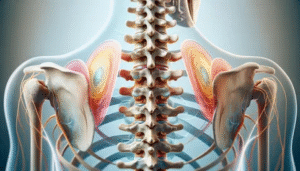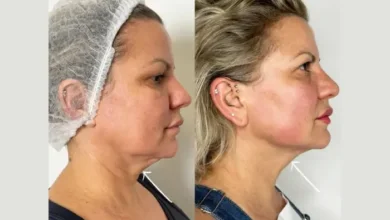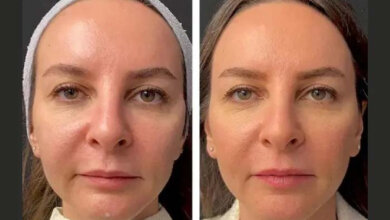Degenerative Joint Disease ICD 10 Code: A Complete Guide

Degenerative joint disease icd 10 code, more commonly known as osteoarthritis, is the most widespread form of arthritis. It is a chronic, progressive condition that causes the breakdown of cartilage in joints, leading to pain, stiffness, and reduced mobility. Because DJD affects millions of people worldwide, accurate documentation of the disease is critical for medical care, insurance reimbursement, and health data research.
This is where the ICD-10 coding system plays an essential role. The International Classification of Diseases, 10th Revision (ICD-10) provides standardized codes for DJD, allowing healthcare providers to record the exact type and location of the condition.

In this article, we will explain DJD in detail, outline its symptoms and risk factors, and provide a clear overview of the ICD-10 codes used to classify it.
What Is Degenerative Joint Disease (DJD)?
DJD is a wear-and-tear condition where the smooth cartilage that cushions joints breaks down over time. Without this protective layer, bones rub against each other, causing pain and loss of mobility.
The joints most often affected include:
-
Knees
-
Hips
-
Spine
-
Hands
Unlike inflammatory arthritis such as rheumatoid arthritis, DJD is primarily mechanical in origin. However, genetic, lifestyle, and environmental factors can accelerate its progression.
Symptoms of DJD
DJD symptoms develop gradually and worsen over time. Common signs include:
-
Joint pain that worsens with activity and improves with rest
-
Stiffness, especially in the morning or after inactivity
-
Swelling or tenderness around affected joints
-
Loss of flexibility and reduced range of motion
-
Crepitus, or a grating sound when moving the joint
-
Bone spurs that develop around the joint edges
In advanced stages, DJD can make even simple daily activities—such as walking, climbing stairs, or gripping objects—painful and difficult.
Risk Factors for DJD
Several factors increase the likelihood of developing degenerative joint disease:
-
Age – Risk increases with aging.
-
Gender – Women are more likely to develop DJD, particularly after menopause.
-
Obesity – Excess weight puts additional stress on joints, especially knees and hips.
-
Joint injuries – Sports injuries, accidents, or repetitive stress accelerate cartilage breakdown.
-
Genetics – A family history of DJD raises the risk.
-
Occupation – Jobs requiring heavy lifting or repetitive motion increase wear and tear.
Diagnosing DJD
Diagnosis involves a combination of patient history, physical exams, and imaging tests:
Medical history and symptoms – Evaluating pain, stiffness, and functional limitations.
Physical examination – Checking joint tenderness, swelling, and range of motion.
X-rays – Showing cartilage loss, bone spurs, and narrowing of joint spaces.
MRI scans – Useful for early cartilage changes not visible on X-rays.
Lab tests – To rule out other conditions such as rheumatoid arthritis or gout.
Once diagnosed, the condition is documented with the appropriate ICD-10 code.
Degenerative Joint Disease ICD-10 Codes
In ICD-10, Degenerative Joint Disease is classified under Osteoarthritis (M15–M19 categories). Coding is based on the joint involved, whether the condition is primary or secondary, and if it is unilateral or bilateral.
Common ICD-10 Codes for DJD
M15.0 – Primary generalized (osteo)arthritis
M15.9 – Polyosteoarthritis, unspecified
M16.0 – Primary osteoarthritis of hip, bilateral
M16.9 – Osteoarthritis of hip, unspecified
M17.0 – Primary osteoarthritis of knee, bilateral
M17.9 – Osteoarthritis of knee, unspecified
M18.0 – Primary osteoarthritis of first carpometacarpal joint (thumb base)
M19.90 – Unspecified osteoarthritis, unspecified site
M47.812 – Spondylosis without myelopathy or radiculopathy, cervical region (for DJD in the spine)
Example Scenarios
DJD in both knees → Code M17.0
DJD of hip, unspecified side → Code M16.9
Generalized DJD affecting multiple joints → Code M15.0
Spinal DJD (cervical region) → Code M47.812
Choosing the correct code is critical for proper billing, treatment records, and healthcare reporting.
Treatment Options for DJD
Although there is no cure for DJD, treatments aim to manage symptoms, improve function, and slow disease progression.
1. Lifestyle Modifications
-
Weight loss to reduce stress on joints
-
Low-impact exercise such as walking, swimming, or cycling
-
Assistive devices (braces, orthotics, canes) to relieve pressure
2. Medications
-
Pain relievers: Acetaminophen, NSAIDs
-
Topical treatments: Gels or creams with NSAIDs or capsaicin
-
Steroid injections for short-term relief
-
Viscosupplementation (hyaluronic acid injections) in the knee
3. Physical Therapy
-
Strengthening surrounding muscles
-
Improving joint flexibility and function
-
Teaching joint-protection strategies
4. Surgery (Severe Cases)
-
Arthroscopy to remove damaged cartilage
-
Osteotomy to realign bones
-
Joint replacement surgery (hip or knee) for end-stage DJD
Living With Degenerative Joint Disease
Managing DJD is about long-term care and adapting daily habits:
-
Stay physically active with safe, low-impact exercises.
-
Maintain a healthy weight to reduce pressure on joints.
-
Eat a balanced, anti-inflammatory diet.
-
Get adequate sleep and manage stress.
-
Join support groups or counseling to cope with chronic pain.
Importance of Accurate ICD-10 Coding
For healthcare providers, proper ICD-10 coding of DJD ensures:
-
Accurate billing and insurance reimbursement
-
Consistency in patient medical records
-
Reliable data for research and public health
-
Improved patient outcomes through precise documentation
Incorrect or vague codes, such as using “unspecified” too often, can lead to claim denials and incomplete records.
Final Thoughts
Degenerative joint disease icd 10 code is a common but challenging condition that impacts millions of lives. While there is no cure, effective treatment and lifestyle modifications can help patients maintain mobility and quality of life.
From a medical perspective, accurate ICD-10 coding (M15–M19 categories) is vital for patient care, insurance processes, and healthcare research. Whether it’s M17.0 for primary osteoarthritis of both knees or M19.90 for unspecified osteoarthritis, these codes provide a standardized language that connects clinical care with healthcare management.




